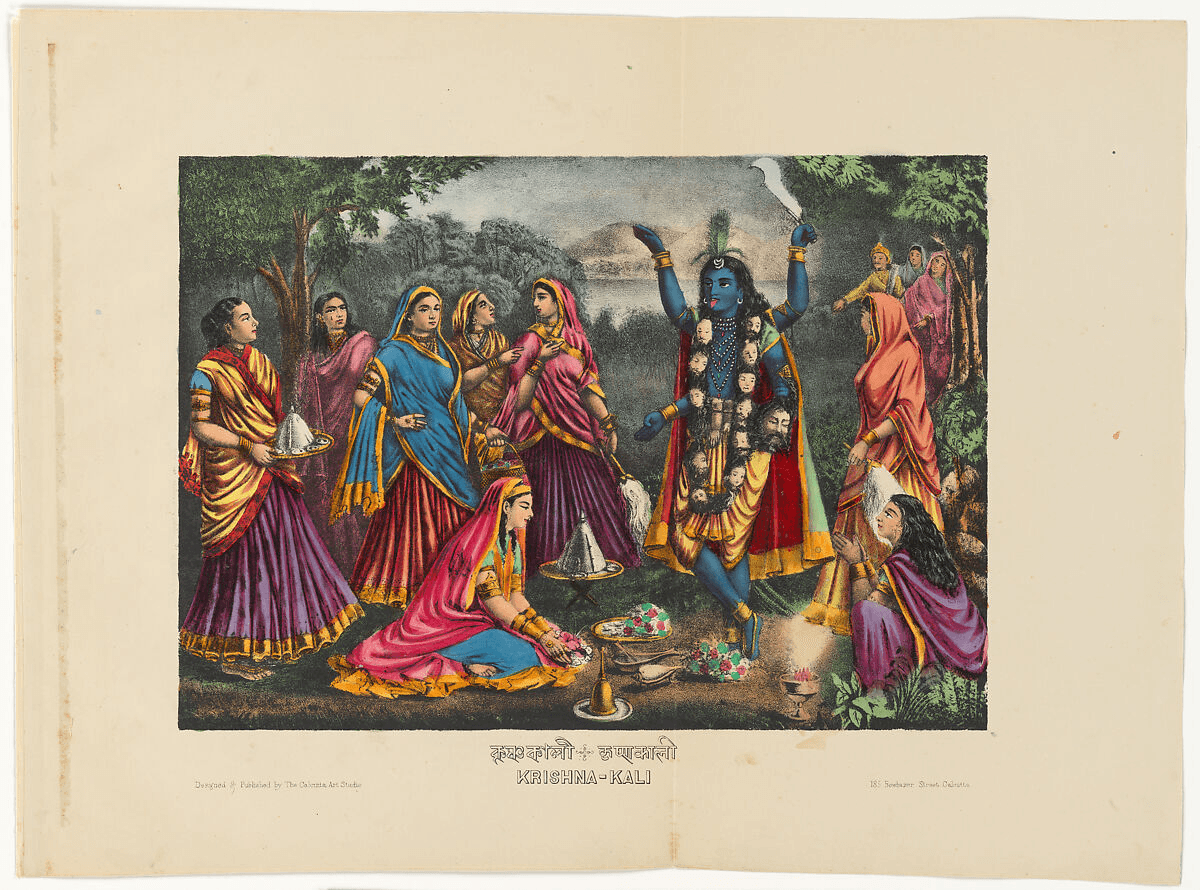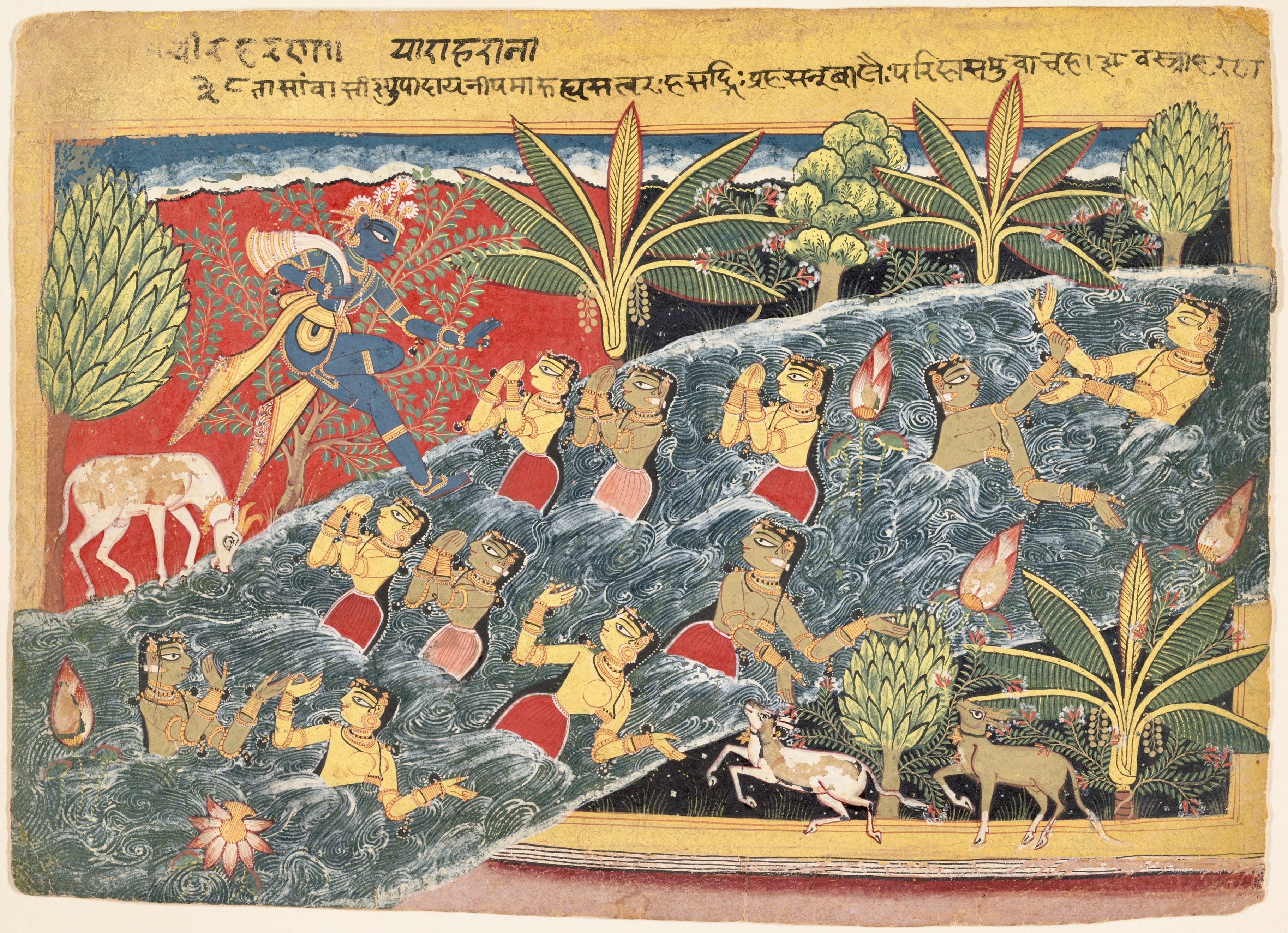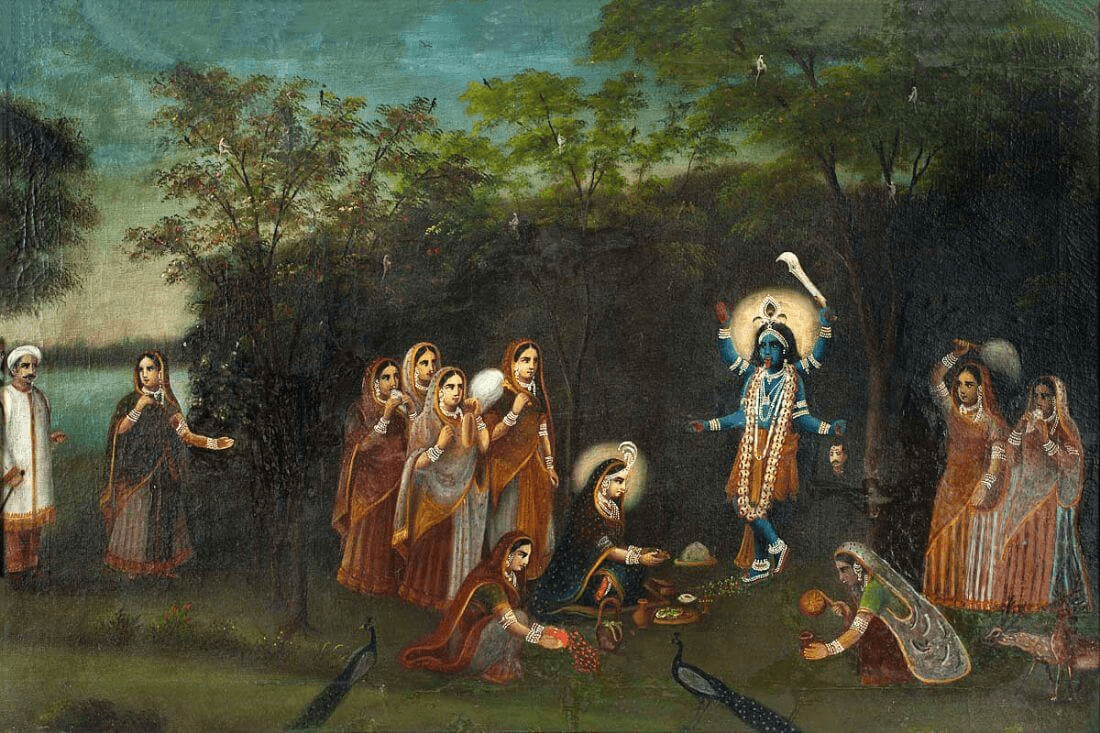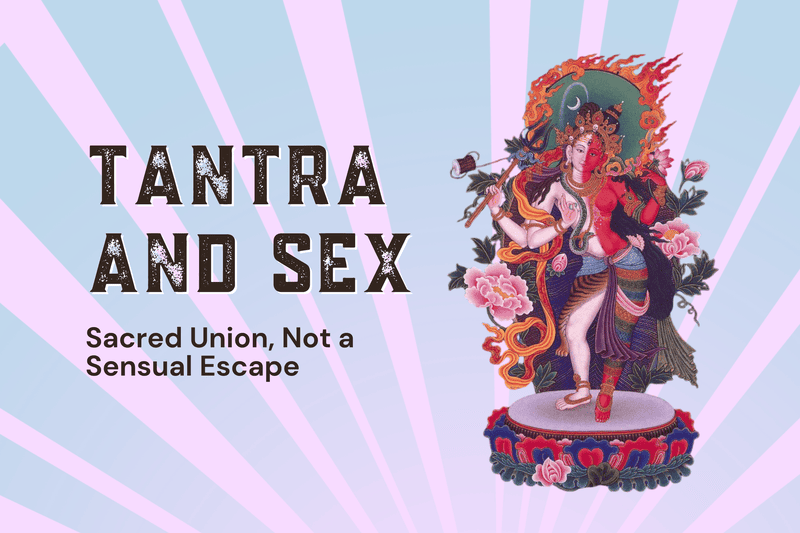Read about the symbolism, scriptural insights, and spiritual revelations that tie Ma Kali and Lord Krishna together in the deepest recesses of Tantra.
In this article, you will read about:
- Kali and Krishna: Two Sides of the Same Cosmic Coin
- When Lord Krishna Invoked Ma Kali
- Awakening Ma Durga, the Source of Ma Kali
- Krishna Tantra: Krishna-Kali’s Esoteric Connection
- Awakening Them Through Tantra Sadhana App
साधनात् सिद्धिमाप्नोति साधनात् परमं सुखम्।
साधनं हि परं धर्मं नास्ति साधनसमम्॥
Through Sadhana, one attains Siddhi (spiritual accomplishment); through Sadhana, supreme bliss. Sadhana is the highest dharma—there is no virtue greater than dedicated spiritual practice.
At first glance, the playful and endearing Lord Krishna may seem worlds apart from the fierce and enigmatic Ma Kali. Yet, beneath these contrasting forms lies a profound and mystical connection rooted in the ancient Tantric traditions of Sanatana Dharma.
Through the lens of Tantra Sadhana, the relationship between Ma Kali and Lord Krishna emerges not as one of duality, but of divine complementarity, where form and formlessness, compassion and destruction, the masculine and feminine, merge in transcendental unity.
Kali and Krishna: Two Sides of the Same Cosmic Coin
Ma Kali and Lord Krishna represent two powerful aspects of the same ultimate reality, Brahman. While Ma Kali embodies the raw, unfiltered energy of time (Kala), transformation, and dissolution, Lord Krishna represents consciousness, bliss (Ananda), and cosmic play (Lila).
The Kali-Krishna connection, however, is not merely philosophical; it is experiential.
In the Devi Bhagavata Purana and select Tantras such as the Rudra Yamala Tantra, one finds allusions to Lord Krishna worshipping the Divine Mother, especially Her form as Ma Kali, to attain Siddhis and deeper union with the Absolute.
When Lord Krishna Invoked Ma Kali
Before the Great War of Mahabharata, Lord Krishna, in fact, is said to have invoked Ma Kali.
Though He was the complete incarnation of Lord Vishnu, He knew that it was Shakti, the Divine Feminine, who would help achieve the ultimate victory for Dharma.
So, on Amavasya, a new moon night, He quietly stepped away from the Pandavas’ camp.
Approaching a secluded spot under a tree, He drew a Yantra (sacred geometry that invokes the Divine Feminine) on the earth and lit a small flame.
With reverence, He began chanting the powerful mantras of Ma Kali, invoking the fierce Goddess.
His chants echoed through the stillness, calling forth Ma’s formidable presence.
Eventually, the air grew thick, charged with electric energy. Before Him manifested Ma Kali, towering majestically over Him, dark as the infinite night sky, eyes blazing, tongue outstretched, and Her hair wild and luminous.
Humbly, Lord Krishna sought Ma’s blessings for victory in the war and to restore cosmic order.
Ma’s compassionate eyes gazed upon the Lord of the Universe, who stood before Her with folded hands.
She blessed Him, promising that Her Divine Power would empower the Pandavas to overcome all odds.
And so, Lord Krishna’s presence on the battlefield carried the unstoppable force of the Divine Mother, guiding the Pandavas to victory and re-establishing Dharma.
Lord Krishna invoking Ma Kali symbolises the importance of Shakti, the Divine Feminine who keeps the Universe in motion. Without Shakti, even Shiva becomes Shava, a corpse.
Her presence balances the cosmos, grants spiritual awakening and ensures victory over the dark forces, externally and internally.

Awakening Ma Durga, the Source of Ma Kali
In various Hindu scriptures, the relationship between Lord Krishna and the Divine Mother is depicted through acts of worship and devotion. For instance, in the Mahābhārata, Bhīṣma Parva, Chapter 23, Arjuna is instructed by Lord Krishna to purify himself and recite a hymn to Ma Durga on the eve of the Kurukshetra battle to secure victory over his enemies.
Beholding the Dhārtarāṣṭra army approach, Krishna said to Arjuna:
Cleansing thyself, O mighty-armed one, utter on the eve of the battle thy hymn to Durgā for the defeat of the foe.
{A PDF of the Stotram from Bhisma-parva, Verses 23.4–16, is available here: Durga Stuti}
In the Devi Mahatmya, Ma Kali emerges from the third eye of Ma Durga in the battle against Raktabija. Ferocious, fierce and furious, She laps up every drop of his blood before it touches the ground and eventually swallows him whole.
By invoking Ma Durga, the Pandavas also invoked the battle energy of Ma Kali for the war.
Similarly, in the Śrīmad Bhāgavatam, Canto 10, Chapter 22, the unmarried girls of Nanda’s Vraja observe a vow of worshipping Ma Kātyāyanī, a form of Ma Durga, to attain Lord Krishna as their husband.
These narratives illustrate the intertwined nature of masculine and feminine divine energies in Vedic and Tantric traditions, emphasising the complementary importance of both in the spiritual journey.

Krishna Tantra: Krishna-Kali’s Esoteric Connection
Krishna Tantra is a lesser-known yet potent stream within the broader Tantric tradition, focusing on the interplay between Lord Krishna and the Divine Mother, particularly in her fierce forms such as Ma Kali.
Rooted in Shakta-Vaishnava synthesis, it provides ritual instructions, meditative practices, and mantras for cultivating devotion and attaining spiritual transformation.
One verse illustrates its core teaching:
He who meditates upon Krishna as the consort of the Divine Mother, merging his consciousness with hers, transcends all dualities and attains Siddhi.
The text emphasises devotion (Bhakti) and ecstatic worship (Ananda) as pathways to realising the non-dual nature of the cosmos. It also illustrates that Krishna, while playful and loving, embodies the inner consort of the Goddess, highlighting the inseparability of divine masculine and feminine energies in Tantric practice.
According to some practitioners, Krishna is not only the Leela Purushottama (Lord of Divine Play) but also the internal consort of the Devi in Her fiercest forms.
In the modern world, original texts specifically on Krishna Tantra are difficult to find, and most of the information available comes from blogs, articles, and online resources. Two references that specifically discuss Krishna Tantra and its teachings are the Kalivilasa Tantra and the Todala Tantra.
- Kalivilasa Tantra: This is a Sanskrit text and is associated with Bengali Tantric traditions. The original language of the text is Sanskrit, which describes Lord Krishna as the son of a golden-skinned Devi who turned black due to passion. It emphasises the union of Krishna with the Divine Mother, particularly in her form as Ma Kali.
- Todala Tantra: This text identifies Lord Krishna as the consort of Ma Kali, placing Him among the Das Mahavidyas, 10 forms of the Supreme Goddess. It underscores the inseparability of divine masculine and feminine energies in Tantric practice.
In Krishna Tantra, Ma Kali is seen not as a terrifying figure but as the force that shatters illusion. Lord Krishna, as the supreme enjoyer of Maya, dances with Ma Kali to show the devotee how to transcend it.
The dance of Kali and Krishna represents the rhythm of the cosmos, where creation and dissolution happen simultaneously.
“n Her lap, even the dark Lord becomes the child, this is the secret of Tantra, where Shakti is the ground of all being.
— Kaulajnananirnaya (कौलज्ञाननिर्णय)

Ma Kali Bhakti is a path of surrender into the unknown, a loving embrace of the Divine in Her rawest form. Lord Krishna Bhakti, on the other hand, delights in joy, music, and Rasa (spiritual flavour).
But both paths dissolve the ego.
What connects them is the inner fire of devotion. Both Kali and Krishna consume the seeker’s ignorance, Kali through destruction, Krishna through seduction.
In advanced states of Tantra Sadhana, the Sadhak often realises that Kali and Krishna are the same Divine Force, reflected in different archetypal forms to awaken various dimensions of the soul.
Awakening Them Through Tantra Sadhana App
Tantra Sadhana App provides a unique and sacred space where seekers can explore these dimensions safely and authentically. With guided meditations, mantras, and practical tools for inner awakening, the app bridges ancient traditions with modern needs.
You’ll find rituals and awakened mantras for Ma Kali and the other 9 forms of the Das Mahavidyas, along with community support and teachings rooted in lineage and authenticity.
In an age fragmented by duality, masculine vs. feminine, light vs. dark, logic vs. emotion, the union of Kali and Krishna teaches the essential truth of non-duality (Advaita). It reminds seekers to rise beyond labels and worship the Divine in totality.
This realisation is not intellectual but experiential, something the Tantra Sadhana path aims to cultivate.
“True Tantra is the union of the polarities within. When Kali dances and Krishna plays, you are reborn.”
In Tantric understanding, the Mother Goddess Kali and Lord Krishna are one essence in different forms, a truth exemplified in the worship of Krishnananda, who revered them both as inseparable aspects of the Divine.
When you walk the path of Tantra Sadhana, you begin to feel it, not as a concept, but as a living pulse. In the stillness between Kali’s heartbeat and Krishna’s flute, you realise:
The Destroyer and the Lover have always been one.
References:
Om Swami. The Legend of the Goddess, os.me, Kaulajnananirnaya: Ancient Tantric Scripture, Rudra Yamala Tantra (translated excerpts), Devi Bhagavata Purana, Skanda 1-12, tantrasadhana.app, weareferment.net, Wisdom Library, Vedabase, Krishna Katha, adishakti.org (PDF), Devi Mahatmya – Krishna Kaali, Shiva Shakti – Krishna & Kali, Srichakra108 Blog


